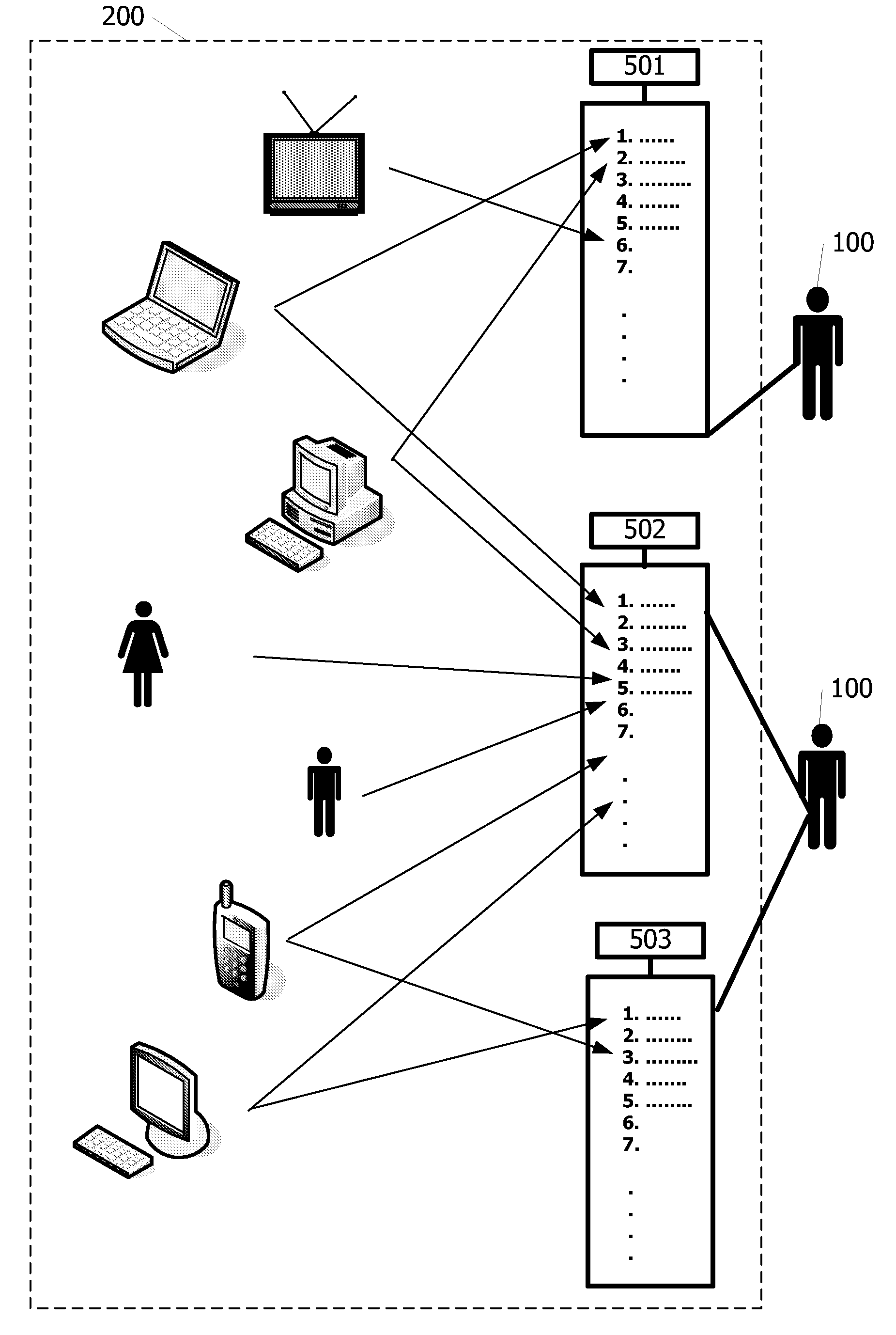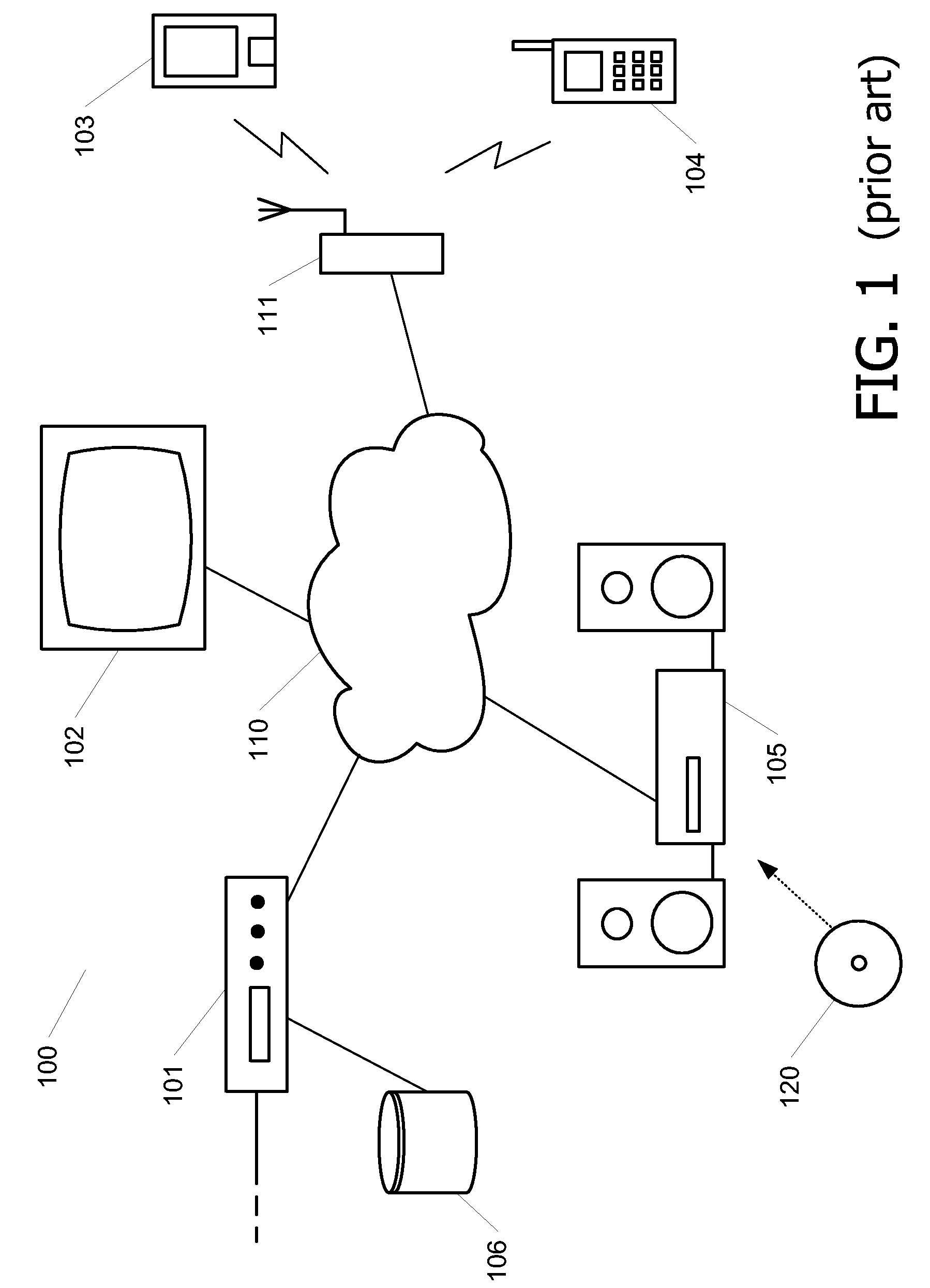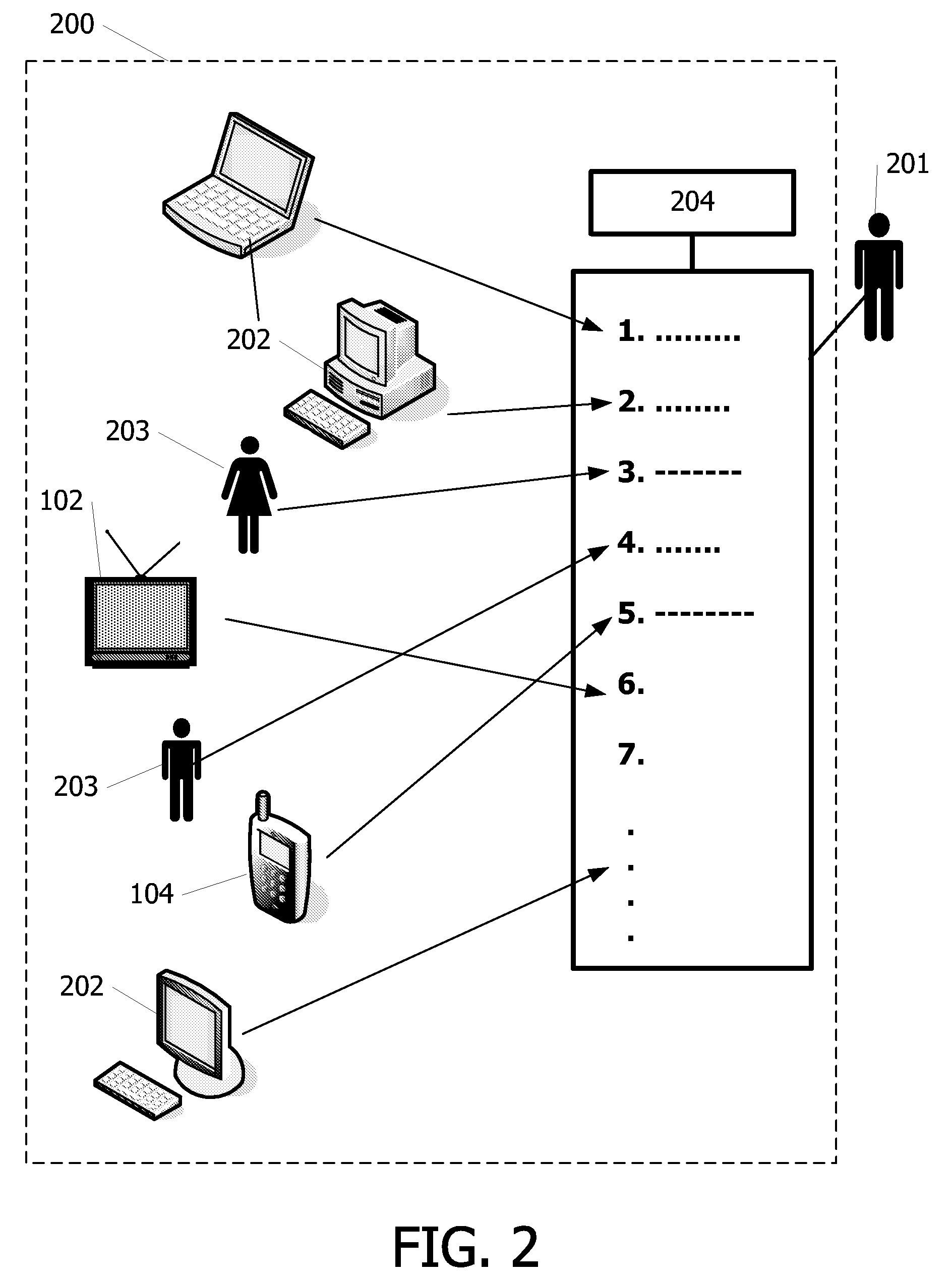Authorized domain policy method
a domain policy and authorization technology, applied in the field of authorization domain policy method, can solve the problems of not providing the typical flexibility of a user, rule is far from ideal for a content consumer, user is not allowed to exercise rights, etc., and achieve the effect of maximum flexibility
- Summary
- Abstract
- Description
- Claims
- Application Information
AI Technical Summary
Benefits of technology
Problems solved by technology
Method used
Image
Examples
Embodiment Construction
[0031]FIG. 1 schematically shows a system 100 comprising devices 101-105 interconnected via a network 110, in which the present invention can be applied. In this example, the system 100 is an in-home network. A typical digital home network includes a number of devices, e.g. a computer, a mobile phone 104, a radio receiver, a tuner / decoder, a CD player 105, a pair of speakers, a television 102, a VCR, a tape deck, and so on. These devices are usually interconnected to allow one device to share content and information with another device. The portable display device 103 and the mobile phone 104 are connected wirelessly to the network 110 using a base station 111, for example using BlueTooth or IEEE 802.11b. The other devices are connected using a conventional wired connection.
[0032]Multimedia content typically being datatext, software, sound, picture etc. relating to things like music, songs, movies, TV programs, pictures, books and the like, but which also includes interactive servic...
PUM
 Login to View More
Login to View More Abstract
Description
Claims
Application Information
 Login to View More
Login to View More - R&D
- Intellectual Property
- Life Sciences
- Materials
- Tech Scout
- Unparalleled Data Quality
- Higher Quality Content
- 60% Fewer Hallucinations
Browse by: Latest US Patents, China's latest patents, Technical Efficacy Thesaurus, Application Domain, Technology Topic, Popular Technical Reports.
© 2025 PatSnap. All rights reserved.Legal|Privacy policy|Modern Slavery Act Transparency Statement|Sitemap|About US| Contact US: help@patsnap.com



